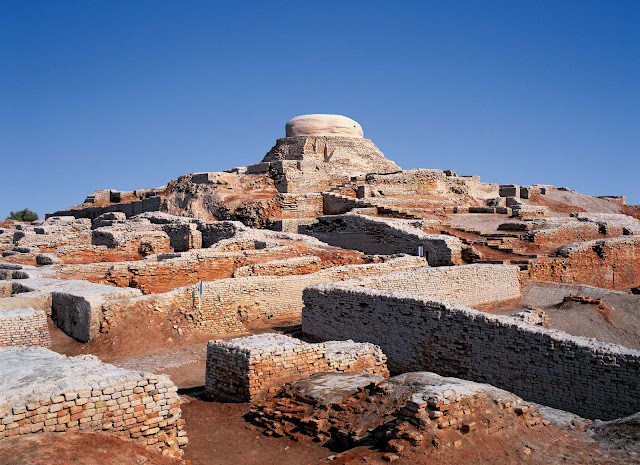 |
| Sindh |
Sindh | History
ORIGIN OF THE NAME
The province of Sindh has been specified after the river Sindh (Indus) which actually created it and has been additionally its sole ability of sustenance. However, the significance of the river and shut phonetical resemblance in nomenclature would make one reflect onconsideration on Sindhu as the in all likelihood starting place of the title of Sindh. Later phonetical modifications changed Sindhu into Hindu in Pahlavi and into Hoddu in Hebrew. The Greeks (who conquered Sindh in one hundred twenty five BC beneath the command of the Alexander the great) rendered it into Indos, subsequently modern-day Indus.
PRE-HISTORIC PERIOD
The Indus valley civilization is the farthest seen outpost of archeology in the abyss of prehistoric times. The areas constitute Pakistan have had a historic individuality of their personal and Sindh is the most necessary amongst such areas. The prehistoric website of Kot Diji in Sindh has furnished facts of excessive magnitude for the reconstruction of a related story which pushes again the records of Pakistan through at least any other 300 years, from about 2,500 BC.
Evidence of a new factor of pre-Harappan tradition has been traced here. When the primitive village communities in Baluchistan had been nevertheless struggling in opposition to a hard highland environment, a rather cultured humans had been attempting to assert themselves at Kot Diji one of the most developed city civilization of the historical world that flourished between the 12 months 25,00 BC and 1,500 BC in the Indus valley web sites of Moenjodaro and Harappa.
EARLY HISTORY
The earliest actual records of Sindh dates from the time when Alexander the Great deserted his scheme of conquest closer to the Ganges, alarmed at the discontent of his soldiers. He embarked a component of the military in boats, floated them down the Jhelum and the Chenab, and marched the the rest on the banks of the river until he got here to the Indus.
There he built a fleet, which sailed alongside the coast toward the Persian Gulf with section of his forces, underneath the command of Nearchus and Ptolemy, while Alexander himself marched thru Southern Baluchistan and Persia to Seistan or Susa. At that time Sindh used to be in the possession of the Hindus, the remaining of whose rulers was once Raja Sahasi, whose race, as is said by using native historians, ruled the kingdom for over two thousand years.
The Arab conquest of Sindh with the aid of Muhammad Bin Qasim in 712 AD gave the Muslims a company foothold on the sub-continent. The explanation of Hiun Tsang, a Chinese historian, leaves no doubt that the social and monetary restrictions inherent in the caste differentiations of Hindu society had however, step by step sapped the internal vitality of the social device and Sindh fell except a lot resistance earlier than the Muslim armies.
According to Al-Idreesi, the well-known metropolis of Al-Mansura was once centered in the course of the reign of Mansur (754-775 AD) the 2d Khalifa of the Abbasid dynasty. Khalifa Harun-al-Rashid (786-809 AD) used to be in a position to lengthen the frontiers of Sindh on its western side.
Sindh was once partly unbiased and the scene of brilliant issues until late in the sixteenth century when it failed into the fingers of Emperor Akbar, and for a hundred and fifty years the chiefs paid tribute, however solely as frequently as they have been compelled to do so, to the Emperor at Delhi. His descendants persisted to acquire massive following and this enabled them to seize political electricity in the north western Sindh underneath the management of Mian Nasir Muhammad.
This befell in the 2nd 1/2 of the seventeenth century. By the flip of that century, foundations of the Kalhora energy have been firmly laid in the northern Sindh beneath the management of Mian Yar Mohammad. During the reign of his son, Mian Noor Muhammad, decrease Sindh with Thatta as its capital got here beneath the Kalhora administration (1150 A.H).
Under the banner of Mir Fateh Ali Khan Talpur, the Balochis defeated the remaining Kalhora ruler Mian Abdul Nabi in the struggle of Halani in 1782 AD. Talpur Amirs regained the components of Sindh (Karachi, Khairpur, Sabzal Kot and Umar Kot) which the ultimate Kalhora chief had conceded to the neighboring rulers.
The British who got here to Sindh additionally as merchants grew to become so effective in relaxation of the sub-continent that in 1843 Sindh misplaced its independence falling prey to the British imperialistic policy. The Talpurs have been defeated on the battlefields of Miani, Dubba and Kunhera and taken prisoners.
The British had conquered Sindh from their bases in Bombay and Kutch and their supporters had been Hindus. Therefore, Sindh was once annexed to the Bombay Presidency in 1843 and a regular coverage to subdue the Muslim majority and to lionize the Hindu minority in Sindh used to be followed. Trade and commerce, Services and schooling grew to become monopolies in the arms of the minority whom with the help of the rulers wrought havoc on Muslims. Within a few years forty percentage of the Muslim land holdings handed on to the Hindu creditors.
It was once after a lengthy conflict that the motive of Sindh used to be supported by way of the Quaid-e-Azam Mohammad Ali Jinnah when he added in his well-known 14-points the demand of Sindh's separation from Bombay Presidency. H.H. Sir Agh Khan, G.M. Syed, Sir Abdul Qayyum Khan (NWFP) and many different Indian Muslim leaders additionally performed their pivotal rule that was once why the Muslims of Sindh succeeded in getting Sindh separated from the Bombay Presidency in 1936.



